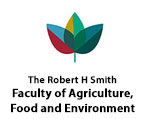Citation:
Abstract:
BACKGROUND: A large persistent seed bank of invasive plants is a significant obstacle to restoration programs. Soil solarization was demonstrated to be an effective method for reducing the seed bank of Australian acacias. However, use of this method in natural habitats might be limited due to the requirement to moisten the soil by irrigation. This study examined the possibility of replacing irrigation by trapping the soil moisture caused by the most recent rainfall, i.e. rain-based soil solarization (RBS). RESULTS: Exposure of Acacia saligna seeds to 57 °C at 20% soil moisture for 68 h resulted in almost complete loss of seed viability. Similarly, RBS treatment significantly reduced the viability of A. saligna seeds buried at a soil depth of 1–19 cm as well as seed density in the natural seed bank, and almost completely eliminated seedling emergence from natural seed banks of A. saligna and other environmental weeds. CONCLUSION: Our results indicate that RBS is an effective method for reducing the seed bank of invasive plants in natural habitats located in various climate regions characterized by different soil types. This is the first demonstration of a successful application of RBS for soil disinfestation. © 2018 Society of Chemical Industry. © 2018 Society of Chemical Industry

